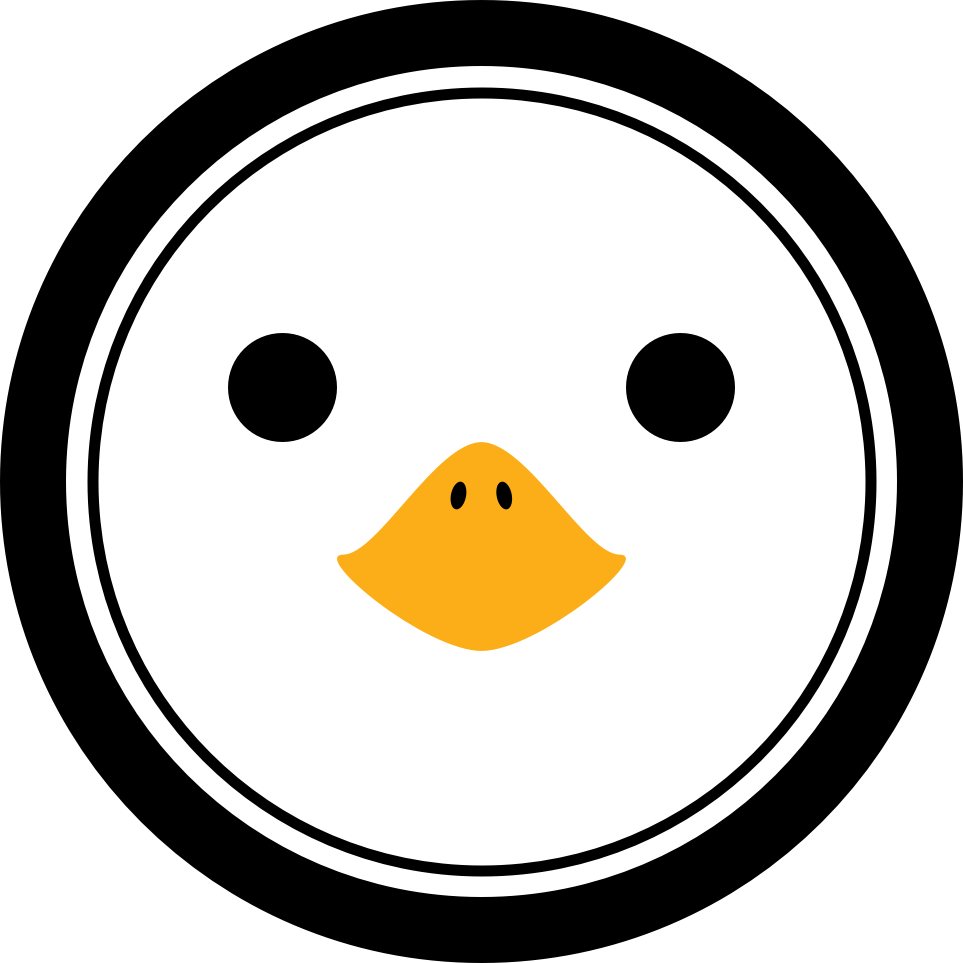I’d like to take a moment here and talk about how much I love Go’s type system, and more importantly, how Go’s struct type has changed my life.
1. Why types are important
-
Go is a statically-typed language.
-
This means that you have to define the data type of each variable you use in your code.
-
This is the programming equivalent of calling your shots in a game of pool.
-
Types that we usually see in programming languages are
strings (text characters),ints (numbers). -
Types are important because writing them into a program tells it how to handle a specific type of data that we’re feeding to it.
An example (albeit simplistic) of why this is important:
-
Imagine you’re working with a list of phone numbers:
[44034633, 60242165, 68524214, 15706247, 51469010] -
If you want to add the country code
+65to each phone number in the list, you’d instinctively want to do something like65 + 44034633. -
If you’ve told your program that
65and44034633should be treated like text and not like numbers — i.e. asstringtypes — then you’d get the expected result:6544034633 -
If you haven’t told your program that
65and44034633should be treated like text, your program may inadvertently treat them as numbers, giving you:44034698.
A more complex example would be working with Time:
-
Timeis a data type in Go. -
This is frustrating at first: why can’t you just write the time in RFC1123/RFC822 formats? (e.g. 15:40:08) and have your program understand it?
-
Reason 1: Because computers understand time in terms of Unix time: the number of seconds since 1 January 1970, 00:00:00 (https://time.is/Unix_time_now).
-
Reason 2: You can’t add time values like normal numbers. Adding
40minutes to30minutes will give you70minutes, but unless you have a way to get your program to understand that there are60minutes to an hour, you’ll have issues getting your program to understand that you wanted your alarm set at8:10PMand not7:70PM. -
Go handles this by forcing you make an explicit conversion from a time like "4 hours" to the
Timetype (run the code here):
package main
import (
"fmt"
"time"
)
func main() {
timenow := time.Now() // Get the time now.
fourhours, _ := time.ParseDuration("4h") // Create a value for a duration of four hours.
timeFourHoursFromNow := timenow.Add(fourhours) // Add four hours to the time now.
fmt.Println(timeFourHoursFromNow)
}-
Notice how the controlled bounds of each type —
TimeandDuration— makes sure that we don’t try to mash together values that aren’t compatible with each other. You can’t add aninttoTimeorDuration. In fact, you can’t add aDurationto aTimeunless it’s through theTime.Add(<duration>)method.
2. Custom Types
One of the best things about Go is that it allows you to define your own data types. For example (code here):
package main
import (
"fmt"
"reflect"
)
type Vegetable string
type Vegetables []Vegetable
type Fruit string
type Fruits []Fruit
func main() {
fruits := []Fruit{"Tomato"}
fruits2 := []Fruit{"Apple"}
veggies := []Vegetable{"Pizza"}
veggies2 := []Vegetable{"Cabbage"}
fruits3 := append(fruits, fruits2...)
fmt.Println(fruits3)
veggies3 := append(veggies, veggies2...)
fmt.Println(veggies3)
//cantdothis := append(fruits, veggies)
//fmt.Println(cantdothis)
fmt.Println("Tomato is a:", reflect.TypeOf(fruits3[0]))
fmt.Println("Pizza is a:", reflect.TypeOf(veggies3[0]))
}Here,
-
We’ve defined a
VegetableandFruittype, which both have a base type ofstring -
We’ve also defined a
VegetablesandFruitstype, which are lists ofVegetableandFruitrespectively. -
In our small program, we can add
fruitsandfruits2together to formfruits3. -
We also can add
veggiesandveggies2together to formveggies3. -
But we can’t add
fruitsandveggiestogether because we’ve set them as different data typesFruitsand `Vegetablesrespectively. -
We can check the type of a variable by calling
reflect.TypeOf(<var>)on it.
Custom types are useful because it helps you define and describe your data very handily. We’ll get into that in the next section when we finally get to talking about structs.
3. Structs
A Go struct is a data type. But unlike data types like Time, string, and int, it doesn’t designate a type of value, but instead is used to group data types together under a single name. That’s why it’s also known as an aggregate type.
It allows us to do stuff like this:
type Veg string
type Meat string
type Fruit string
type Meal struct {
Vegetables Veg // <Field> <Type>
Meats Meat // <Field> <Type>
Fruits Fruit // <Field> <Type>
}Here, we’ve set up a Meal struct that describes what generally goes into a meal: 1x Veg, 1x Meat, and 1x Fruit. Apart from being able to programmatically compare two different meals (e.g. does meal1 contain the same Veg, Meat, and Fruit) like how we compared our Fruits and Vegetables, this makes our data very readable. Another developer who comes to our code and wants to figure out what Meals are can read the type definition and instantly know what data should go into it, and how it plays with the rest of the program.
A more practical example would be describing a list of people:
type Person struct {
ID int
Name string
Phone string
Email string
}
type AddressBook []PersonFrom reading this type definition, we know that:
-
Each person has four attributes that we save in our program: an
ID(which is a number), aName, aPhonenumber (which we save as text), and anEmailaddress. -
An
AddressBookis a list of people, which uses thePersonstruct. So we know that theAddressBooktype contains theID,Name,Phonenumber, andEmailaddress of each person in it.
And most importantly, we know the data types to expect when using the data of these types:
-
We know that
IDis a number and not, say, a hexadecimal string like2c34788af99f9ca074434e362d584d54. -
We know that the phone number of each person is stored as text.
-
We also know that the first name and last name are not differentiated in our records — our program doesn’t care.
4. Going deeper
All this really kicked in for me only when I needed to figure out what other Go developers were thinking. Earlier this week I was stuck trying to figure out why, to extract an Ethereum wallet address from a private key, I had to write these lines of code:
publicKey := privateKey.Public()
publicKeyECDSA, ok := publicKey.(*ecdsa.PublicKey)
if !ok {
log.Fatal("error casting public key to ECDSA")
}This, of course, stumped me. Calling privateKey.Public() should have already given me the PublicKey, but it apparently didn’t — I had to get it by making an additional (and strange) publicKey.(*ecdsa.PublicKey) call.
Digging into the Go source code, I realised what was happening:
// From $GOROOT/libexec/src/crypto/ecdsa/ecdsa.go
// PublicKey represents an ECDSA public key.
type PublicKey struct {
elliptic.Curve
X, Y *big.Int
}
// PrivateKey represents an ECDSA private key.
type PrivateKey struct {
PublicKey
D *big.Int
}
//...
// Public returns the public key corresponding to priv.
func (priv *PrivateKey) Public() crypto.PublicKey {
return &priv.PublicKey
}-
A given
PrivateKeyallows you to get its associatedPublicKeyby calling itsPublic()method. -
But the curious thing is that it returns a value that’s of type
crypto.PublicKeyinstead ofPublicKey, which means that it’s not returning thePublicKeytype we see defined above the method, but another type that’s defined in thecryptolibrary:
// From $GOROOT/libexec/src/crypto/crypto.go
// PublicKey represents a public key using an unspecified algorithm.
type PublicKey interface{}
// PrivateKey represents a private key using an unspecified algorithm.
type PrivateKey interface{}-
I don’t fully understand this, but I assume that it’s so that different libraries can use the same
cryptolibrary as its base. -
So, in order to get the ECDSA public key that we need to use as our Ethererum address, we need to cast the PublicKey as type
*ecdsa.PublicKey.
Another example — this is what goes into an Ethereum block:
// From github.com/ethereum/go-ethereum/core/types/block.go
// Block represents an entire block in the Ethereum blockchain.
type Block struct {
header *Header
uncles []*Header
transactions Transactions
// caches
hash atomic.Value
size atomic.Value
// Td is used by package core to store the total difficulty
// of the chain up to and including the block.
td *big.Int
// These fields are used by package eth to track
// inter-peer block relay.
ReceivedAt time.Time
ReceivedFrom interface{}
}And this is what goes into a Block header:
// From github.com/ethereum/go-ethereum/core/types/block.go
// Header represents a block header in the Ethereum blockchain.
type Header struct {
ParentHash common.Hash `json:"parentHash" gencodec:"required"`
UncleHash common.Hash `json:"sha3Uncles" gencodec:"required"`
Coinbase common.Address `json:"miner" gencodec:"required"`
Root common.Hash `json:"stateRoot" gencodec:"required"`
TxHash common.Hash `json:"transactionsRoot" gencodec:"required"`
ReceiptHash common.Hash `json:"receiptsRoot" gencodec:"required"`
Bloom Bloom `json:"logsBloom" gencodec:"required"`
Difficulty *big.Int `json:"difficulty" gencodec:"required"`
Number *big.Int `json:"number" gencodec:"required"`
GasLimit uint64 `json:"gasLimit" gencodec:"required"`
GasUsed uint64 `json:"gasUsed" gencodec:"required"`
Time *big.Int `json:"timestamp" gencodec:"required"`
Extra []byte `json:"extraData" gencodec:"required"`
MixDigest common.Hash `json:"mixHash"`
Nonce BlockNonce `json:"nonce"`
}5. Postscript
Lost? I am too. But I’m learning from it. The legibility of Go’s type system and its structs help with this — being able to very quickly see and parse the internals of Go and the libraries that I have to write about gives me a better understanding of the systems I’m using and why they act the way they do.
Now, I’ve also got one more descriptive tool under my belt: the Go struct. It’s a useful way of describing packs of data and their types that I’ll be using more of when writing. I hope this has been of use to you as well. Until next time.

